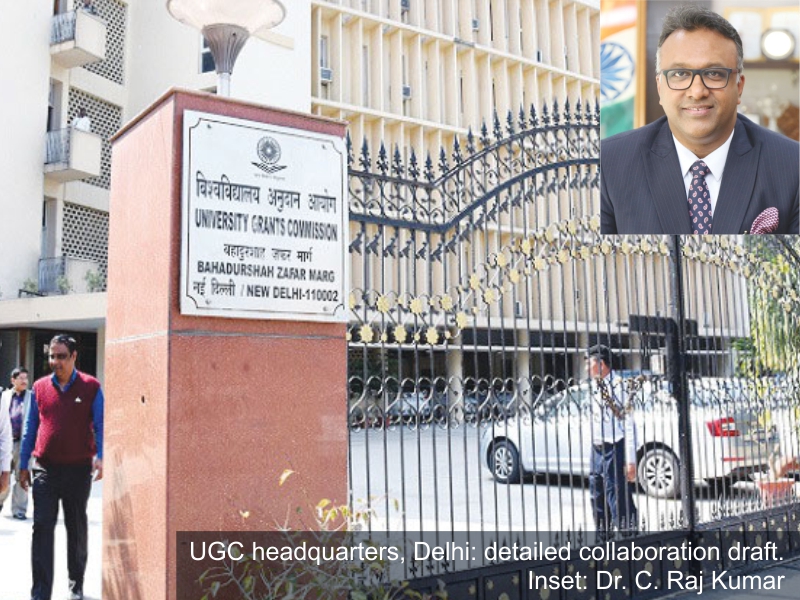Delhi: International outreach guidelines
Autar Nehru (Delhi)
In a major step towards internationalisation and upgradation of the country’s higher education system, on February 17, the University Grants Commission (UGC) circulated a draft of the University Grants Commission (Academic Collaboration between Indian and Foreign Higher Education Institutions to offer Joint Degree, Dual Degree and Twinning Programmes) Regulations, 2021 for public comment and suggestions. The time window for comments and recommendations closed on March 5.
Circulation of the policy draft is one more step towards contemporising and internationalising India’s higher education institutions including 39,931 undergrad colleges and 967 universities. Although some of these higher education institutions (HEIs) are of more than 150 years vintage, not one of them is ranked in the Top 200 WUR (World University Rankings) league tables published annually by the well-reputed London-based global HEIs rating agencies QS and Times Higher Education.
Especially since the dawn of the new millennium, a growing number of educationists and monitors of the education scene (including EW editors) have been advocating greater collaboration between Indian HEIs and universities top-ranked by QS/THE.
During the rule of the Congress-led UPA governments at the Centre, a Bill to permit foreign varsities to establish campuses in India was drafted in 2005 but failed to get Cabinet approval. A second Bill drafted by then Union education minister Kapil Sibal — the Foreign Educational Institutions (Regulation of Entry and Operations) Bill 2010 — was fiercely opposed by the BJP and other opposition parties and lapsed when the UPA alliance was routed in General Election 2014.
Since then, the BJP leadership has had a change of heart and mind. In 2019, the HRD (now education) ministry included greater internationalisation of Indian HEIs in its EQUIP (Education Quality Upgradation and Inclusion Programme) for higher education. The UGC draft of February 17 is the natural sequel to EQUIP.
The draft regulations provide for two types of collaboration between Indian and foreign HEIs. In the first ‘automatic mode,’ only Indian HEIs accredited by the National Assessment and Accreditation Council (NAAC) with a minimum score of 3.01 on a 4-point scale (at the time of application) or ranked among India’s Top 100 universities in the National Institutional Ranking Framework (NIRF) published annually by the education ministry, or an officially designated ‘Institution of Eminence’ can suo motu initiate joint degree, dual degree and twinning programmes with offshore HEIs.
Moreover, foreign HEIs must be ranked among the Top 500 in the latest THE and/or QS global league tables. Other Indian HEIs will be required to obtain the approval of an expert committee of UGC. The draft regulations come with a caveat. “A franchise arrangement, whether overtly or covertly, by whatever nomenclature used, between a foreign higher education institution and an Indian higher education institution shall not be allowed under these Regulations,” says the UGC draft effectively ruling out establishment of foreign HEIs campuses in India’s over-regulated higher education sector.
“Although several private universities have signed dual degree and twinning programmes with foreign HEIs, official policy on the permissibility of such collaboration agreements is a grey area. The new guidelines are likely to detail the types and ambit of collaboration agreements between Indian and foreign HEIs. The comprehensive regulations will be specially useful for the large number of state government-promoted HEIs and universities which urgently need to modernise and upgrade their syllabus and curriculums,” says Dr. C. Raj Kumar, founding vice chancellor of the privately-promoted O.P. Jindal Global University, Sonipat (Haryana, estb.2009) ranked India’s #1 private university by QS.
Better late than never.
















Add comment